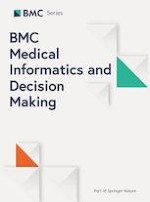Open Access 01-12-2020 | Acute Kidney Injury | Research
Hyperchloremia in critically ill patients: association with outcomes and prediction using electronic health record data
Published in: BMC Medical Informatics and Decision Making | Special Issue 14/2020
Login to get accessAbstract
Background
Increased chloride in the context of intravenous fluid chloride load and serum chloride levels (hyperchloremia) have previously been associated with increased morbidity and mortality in select subpopulations of intensive care unit (ICU) patients (e.g patients with sepsis). Here, we study the general ICU population of the Medical Information Mart for Intensive Care III (MIMIC-III) database to corroborate these associations, and propose a supervised learning model for the prediction of hyperchloremia in ICU patients.
Methods
We assessed hyperchloremia and chloride load and their associations with several outcomes (ICU mortality, new acute kidney injury [AKI] by day 7, and multiple organ dysfunction syndrome [MODS] on day 7) using regression analysis. Four predictive supervised learning classifiers were trained to predict hyperchloremia using features representative of clinical records from the first 24h of adult ICU stays.
Results
Hyperchloremia was shown to have an independent association with increased odds of ICU mortality, new AKI by day 7, and MODS on day 7. High chloride load was also associated with increased odds of ICU mortality. Our best performing supervised learning model predicted second-day hyperchloremia with an AUC of 0.76 and a number needed to alert (NNA) of 7—a clinically-actionable rate.
Conclusions
Our results support the use of predictive models to aid clinicians in monitoring for and preventing hyperchloremia in high-risk patients and offers an opportunity to improve patient outcomes.





